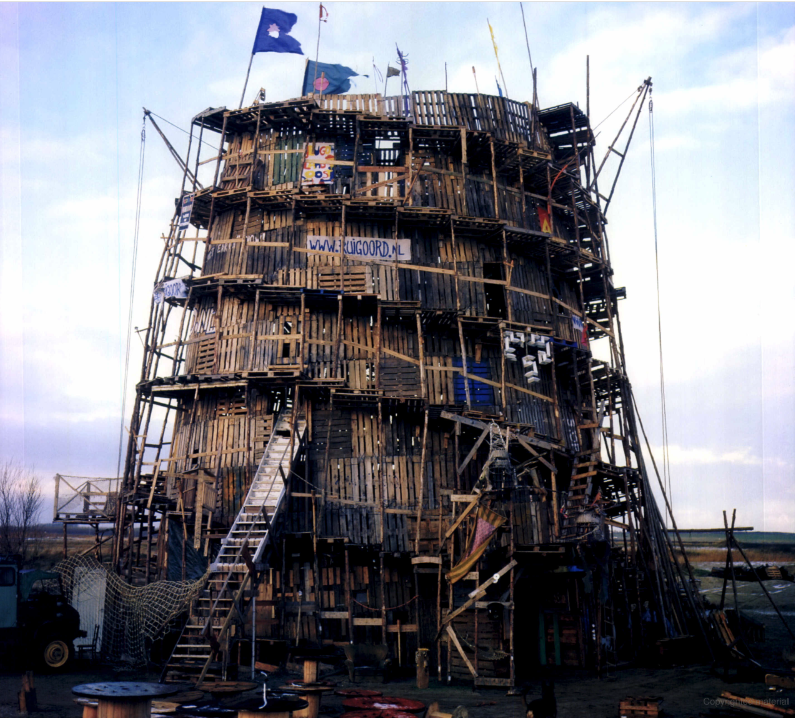Ruigoord
![]()
Amsterdam, The Netherlands
Experimental
Squatter Settlement / Artist Colony
1973 - Present

Amsterdam, The Netherlands
Experimental
Squatter Settlement / Artist Colony
1973 - Present
1 Church 2 Stichting Hand Werk 3 Georgie’s Wundergarten 4 Artist Studio 5 Butterfly Garden 6 Temple of Self 7 Amsterdam Port
![]()
Ruigoord gives a good impression of being isolated, even in Europe’s most densely populated country. An island for “free range people” surrounded by the Amsterdam port, Ruigoord (Rough Place) has stubbornly persisted for the last fifty years. In the early seventies, the small town of Ruigoord had been emptied to make room for the port of Amsterdam, which had threatened to consume the town since the 1950s. The 1973 oil crisis delayed the expansion just long enough for a group of opportunistic artist-squatters to take up residence. The artist moved into the church (1) and abandoned houses, and began building, painting, and performing. New dwellings arose organically, and could be built, adapted, and converted based on the needs and desires of the occupants.
Ruigoord describes itself as, “Non-conformists, self-willed romantic idealists, builders of castles in the air, spiritual anarchists, surrealists...For Ruigoord all of these conceptions are bound up with engagement: power ot the imagination.” After years of protests and court battles, in 2000 it was decided that the town-turned-artist-colony-bird-sanctuary could remain but the people had to leave. Today it’s a culture space, with a better claim to the title “Free port” than the tax-free havens for billionaire art hordes.

Ruigoord gives a good impression of being isolated, even in Europe’s most densely populated country. An island for “free range people” surrounded by the Amsterdam port, Ruigoord (Rough Place) has stubbornly persisted for the last fifty years. In the early seventies, the small town of Ruigoord had been emptied to make room for the port of Amsterdam, which had threatened to consume the town since the 1950s. The 1973 oil crisis delayed the expansion just long enough for a group of opportunistic artist-squatters to take up residence. The artist moved into the church (1) and abandoned houses, and began building, painting, and performing. New dwellings arose organically, and could be built, adapted, and converted based on the needs and desires of the occupants.
Ruigoord describes itself as, “Non-conformists, self-willed romantic idealists, builders of castles in the air, spiritual anarchists, surrealists...For Ruigoord all of these conceptions are bound up with engagement: power ot the imagination.” After years of protests and court battles, in 2000 it was decided that the town-turned-artist-colony-bird-sanctuary could remain but the people had to leave. Today it’s a culture space, with a better claim to the title “Free port” than the tax-free havens for billionaire art hordes.

Nam semper semper ex
In porttitor pellentesque sapien